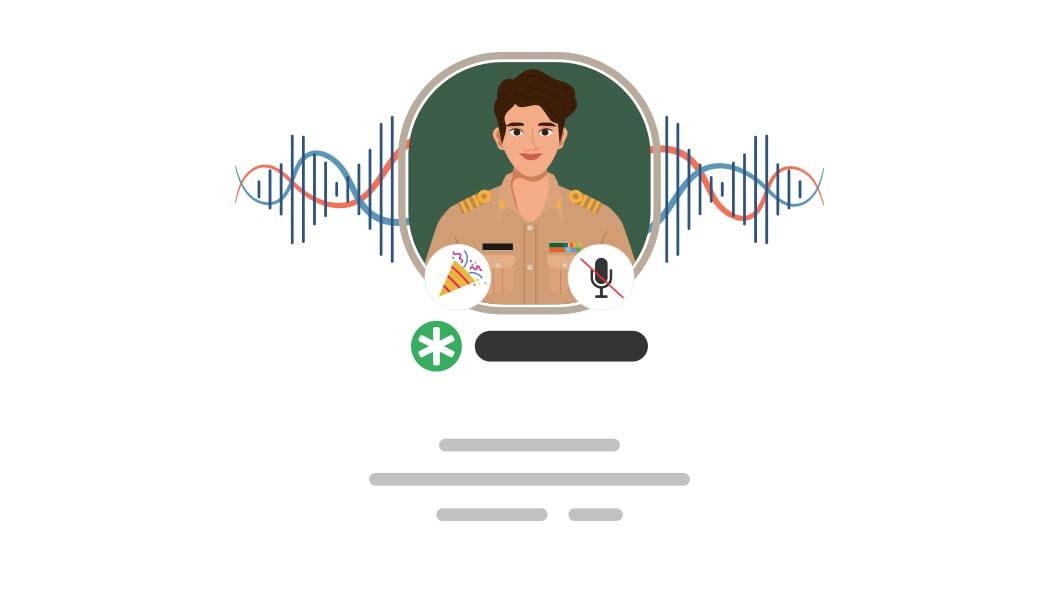
Voice Assistants and Their Impact on Daily Life
Introduction
In recent years, voice assistants have emerged as game-changing technology, revolutionizing the way we interact with our devices and transforming our daily lives. These intelligent virtual assistants, powered by artificial intelligence (AI), have become an integral part of our homes, smartphones, and even cars. From simple tasks like setting reminders to complex actions such as controlling smart home devices, voice assistants have made our lives easier and more efficient. In this blog, we will explore the impact of voice assistants on daily life and the benefits they bring to our everyday routines.
1. Enhanced Convenience:
Voice assistants have fundamentally changed the way we interact with technology. Instead of typing or navigating through menus, we can simply ask a question or give a command to our voice assistant. Whether it’s checking the weather, playing our favorite music, or ordering groceries, voice assistants provide unparalleled convenience by saving us time and effort. With voice recognition technology becoming more accurate and responsive, interacting with our devices has never been easier.
2. Smart Home Integration:
Voice assistants have seamlessly integrated with smart home devices, allowing us to control various aspects of our homes with simple voice commands. We can adjust the thermostat, turn on/off lights, lock doors, and even operate kitchen appliances, all through voice interactions. This level of automation and control enhances our comfort, energy efficiency, and overall living experience. Voice assistants act as the central hub for managing multiple smart devices, creating a connected and efficient home ecosystem.
3. Accessibility for All:
One of the greatest benefits of voice assistants is their ability to provide accessibility for individuals with disabilities. People with limited mobility or visual impairments can easily interact with their devices and access information using voice commands. Voice assistants enable hands-free operation, empowering individuals to perform tasks that would otherwise be challenging. From reading out texts to providing step-by-step instructions, these assistants promote inclusivity and bridge the gap between technology and accessibility.

4. Personalized Assistance:
Voice assistants have evolved beyond basic tasks and can now provide personalized assistance tailored to individual preferences. They learn from user interactions and data to understand our habits, preferences, and interests. By analyzing our search history, location, and other data points, voice assistants can offer personalized recommendations, such as suggesting nearby restaurants or recommending movies based on our past choices. This level of personalization enhances the user experience and adds value to our daily lives.
5. Educational Support:
Voice assistants have become valuable tools for educational purposes, especially for children. They can answer questions, provide explanations, and offer interactive learning experiences. Voice-enabled devices can help children with spelling, math problems, and general knowledge inquiries. Additionally, voice assistants can read audiobooks, helping individuals of all ages to access literature and expand their knowledge.
6. Improved Productivity:
Voice assistants have had a significant impact on productivity in both personal and professional settings. With voice commands, we can set reminders, schedule appointments, and create to-do lists effortlessly. Voice dictation features enable us to compose emails, write documents, and take notes, all without the need for manual typing. These capabilities streamline our workflow, save time, and allow us to focus on more important tasks. Voice assistants serve as virtual productivity assistants, helping us stay organized and efficient throughout the day.
Voice assistants have also found their way into the realm of health and wellness. They can assist with fitness routin
7. Health and Wellness Support:
es by providing workout instructions, tracking progress, and offering motivation. Voice-enabled devices can also connect with health apps and wearable devices, allowing us to monitor our physical activity, sleep patterns, and even heart rate. Additionally, voice assistants can provide information on healthy recipes, offer meditation or relaxation techniques, and remind us to take medication. By integrating with our wellness routines, voice assistants promote a healthier lifestyle.
8. Language Learning:

For those interested in learning a new language, voice assistants can be invaluable tools. They can help with pronunciation, vocabulary building, and conversational practice. With the ability to provide real-time translations, voice assistants make it easier to communicate and understand different languages. Interactive language lessons and quizzes through voice interactions make language learning engaging and accessible to anyone with a voice-enabled device.
9. Entertainment and Media Consumption:
Voice assistants have transformed the way we consume entertainment and media. By simply using voice commands, we can play our favorite songs, create personalized playlists, and explore new music genres. Voice assistants can also provide news briefings, sports updates, and recommendations for movies, TV shows, and podcasts. With voice-controlled streaming devices, we can easily navigate through content, adjust volume, and skip tracks, enhancing our entertainment experience.
10. Privacy and Security Considerations:
While voice assistants offer numerous benefits, it is crucial to consider privacy and security aspects. Voice interactions are recorded and stored to improve the accuracy and functionality of voice assistants. As users, we must be aware of the data being collected and stored and take necessary precautions to protect our privacy. It is essential to review and manage privacy settings, control data sharing, and regularly update passwords and security measures associated with voice-enabled devices.
11. Voice Commerce:
Voice assistants are revolutionizing the way we shop and conduct transactions. With the rise of voice commerce, we can now make purchases, order groceries, and even book services through our voice assistants. By integrating with e-commerce platforms and digital payment systems, voice assistants provide a seamless and convenient shopping experience. We can simply speak our requests, provide payment information, and have products delivered to our doorstep. Voice commerce is not only convenient but also opens up new opportunities for businesses to engage with customers and offer personalized recommendations based on their preferences and purchasing history.
12. Driving Safety and Hands-Free Operation:
Voice assistants have made significant contributions to improving driving safety. By providing hands-free operation, they allow drivers to access information, make calls, and control navigation systems without taking their hands off the wheel or their eyes off the road. Voice commands enable drivers to stay focused and keep their attention on driving, reducing the risk of accidents caused by distracted driving. Voice assistants also offer real-time traffic updates, suggest alternative routes, and provide assistance during emergencies, further enhancing safety on the road.
13. Social Interaction and Connectivity:
Voice assistants have transformed social interactions and connectivity. With voice-enabled devices, we can make hands-free calls, send messages, and initiate video chats with friends and family. Voice assistants can also read out and compose messages, allowing us to stay connected even when our hands are occupied. Additionally, voice assistants can integrate with social media platforms, enabling us to post updates, check notifications, and interact with our social networks through voice commands. This level of connectivity facilitates seamless communication and helps us stay in touch with our loved ones.
14. Environmental Impact:
Voice assistants have the potential to contribute to environmental sustainability. By reducing the need for physical interactions with devices, they minimize the consumption of materials and energy associated with traditional interfaces. Voice-controlled smart home systems promote energy efficiency by allowing us to control and monitor our energy usage, leading to reduced energy consumption and carbon footprint. Moreover, voice assistants can provide information on sustainable practices, such as recycling guidelines or energy-saving tips, helping us make more environmentally conscious decisions.
15. Continuous Advancements and Integration:
Voice assistants are continuously evolving and integrating into various devices and applications. We can find them in smartphones, smart speakers, cars, TVs, and even wearable devices. As technology advances, voice assistants are becoming more intelligent, understanding context, and responding with more natural language. They are also integrating with other AI technologies, such as computer vision, to provide a more comprehensive and interactive experience. With ongoing research and development, voice assistants will continue to expand their capabilities and find new applications in different aspects of our daily lives.
Conclusion:

Voice assistants have undeniably transformed our daily lives, offering convenience, efficiency, and accessibility. From controlling our homes to providing personalized recommendations, these virtual assistants have become our trusted companions in the digital age. As technology continues to advance, we can expect voice assistants to become even more intelligent and seamlessly integrated into our lives. With their ability to understand natural language, voice assistants are redefining the way we interact with technology, making our lives more convenient, inclusive, and connected.
FAQ’s?
1. What is a voice assistant?
A voice assistant is an artificial intelligence-powered virtual assistant that responds to voice commands and performs various tasks or provides information based on the user’s voice interactions.
2. How do voice assistants work?
Voice assistants work by using automatic speech recognition (ASR) to convert spoken words into text. This text is then processed using natural language processing (NLP) algorithms to understand the user’s intent and generate appropriate responses or actions.
3. Which devices have voice assistants?
Voice assistants can be found in various devices, including smartphones (e.g., Siri on iPhones, Google Assistant on Android), smart speakers (e.g., Amazon Echo with Alexa), smart TVs, cars (e.g., Apple CarPlay, Android Auto), and wearable devices.
4. What tasks can voice assistants perform?
Voice assistants can perform a wide range of tasks, including answering questions, setting reminders, playing music, making phone calls, sending messages, providing weather updates, controlling smart home devices, ordering products, and even offering personalized recommendations based on user preferences.
5. Are voice assistants secure?
Voice assistants are designed with security measures in place to protect user privacy and data. However, it is important for users to be mindful of their privacy settings, review data sharing practices, and regularly update security measures associated with their voice-enabled devices.









